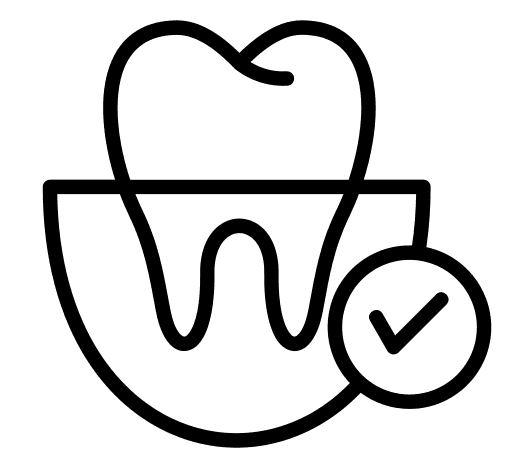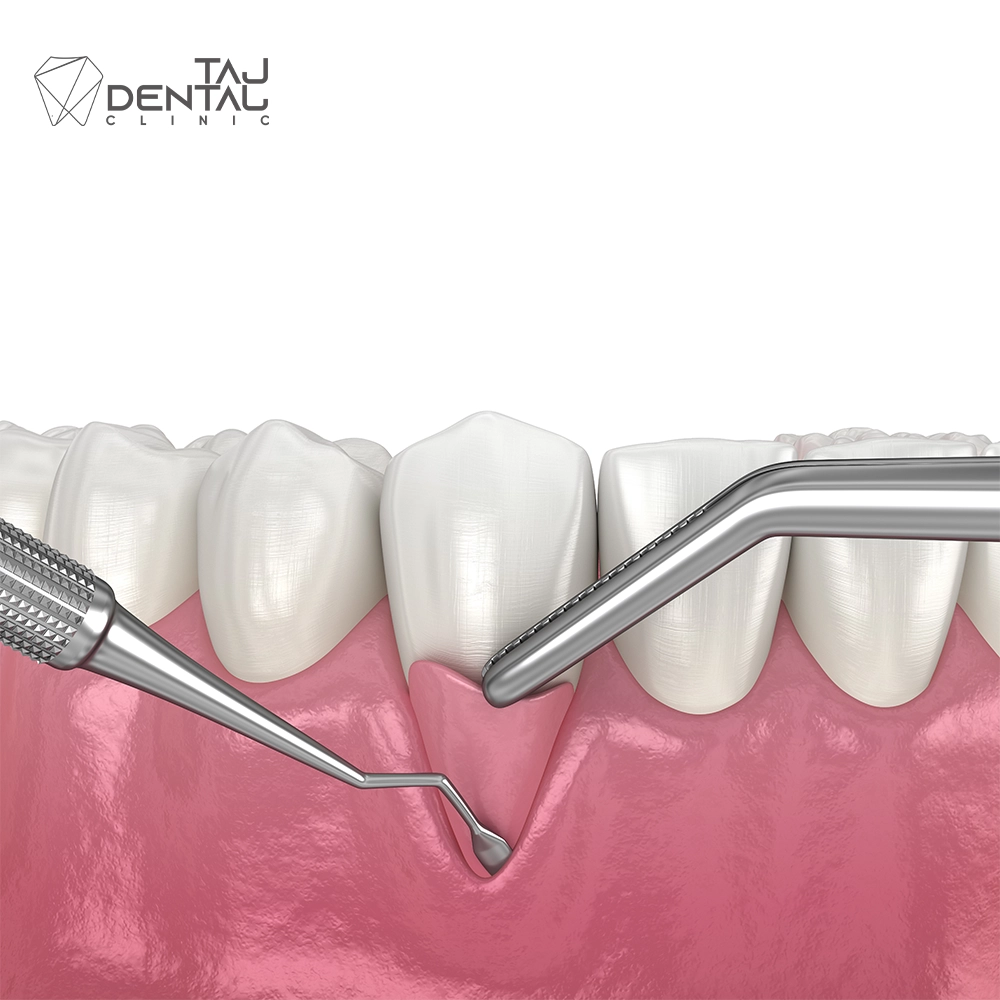021-22802271


Taj Dental
At Taj Dental Clinic, we attach great importance to maintaining the health of teeth and gums. Gum disease is one of the most common oral and dental problems that can lead to wounds and serious problems. In this article, we will examine gum diseases, their causes, and how to prevent and treat them.

Gum diseases are caused by inflammation and destruction of the gums and the bases of the teeth. The two main types of gum disease are:
Gingivitis:
Periodontitis:

The treatment of gum diseases goes through different stages and depends on the severity of the disease and the stage of its diagnosis. In the following, we examine the stages of treatment of gum diseases:
Diagnosis: First, your dentist must diagnose the disease. This includes a careful examination of the gums, measuring the depth of the gum pocket (if needed), and evaluating signs and symptoms such as bleeding gums and swelling.
Tooth cleaning: Tooth cleaning is one of the important steps in the treatment of gum diseases. This step is performed by the dentist or assistants and includes the removal of dental plaque and tartar.
Provide guidance on home care: The dentist will teach you tips on home care of teeth and gums. This includes proper brushing techniques, flossing, and proper anti-plaque agents.
Medications and oral medications: In some cases, the dentist may prescribe oral medications or antibiotics to control gum inflammation and infection.
Post-treatment care: After the initial treatment, you must follow the post-treatment care. This includes regular visits to the dentist for follow-up and continued tooth cleaning.
Surgical treatments: In more severe cases of gum disease, surgical treatments may be needed. This includes deep gum cleaning surgery (radicular cleaning), correcting gum decay, or performing surgical procedures to repair damaged gum tissue.
Dental implants: If the gum disease has led to the destruction of the deeper tissues of the mouth and we have lost teeth, we need replacement dental implants. These implants are surgically placed in your mouth with the help of specialist dentists.
To maintain gum health and prevent gum disease, regular dental care, periodic visits to the dentist, and basic oral hygiene are important. Also, if you have symptoms of gum diseases such as bleeding gums or swelling, you should see a dentist immediately so that treatment can be done on time and serious complications can be eliminated.
با بیش از ۳۰ سال سابقه در عرصه دندانپزشکی همیشه در تلاش بوده تا با کادری متعهد و مجرب ، بهترین خدمات و مراقبت های دندانی را به مراجعین محترم ارائه دهد .
کلینیک تاج دنتال برخوردار از محیطی آرام و دوستانه ، در تلاش است تا با بهره گرفتن از خدمات تمام دیجیتال و پیشرفته ، لبخند بر لبان شما نقش ببندد .